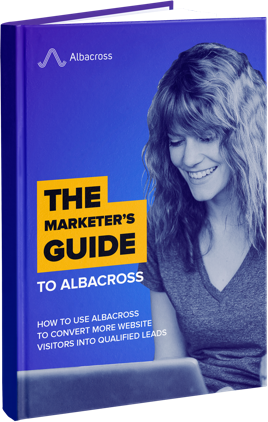

Driving demand with Albacross is not just about increasing conversion of your existing website traffic. It’s about identifying your ideal customers who show high buying intent to help you generate more qualified leads for your sales team.
You may already have a good idea of what your ideal customer profile looks like or you may need to create one from scratch.
Either way, it’s really important to make it as clear as possible and make sure that your marketing and sales teams are aligned on it. This will ensure the leads you route to your Sales Reps from Albacross are high quality leads who will be a good match for your business.
To create your ideal customer profile, start by writing down a list of your 10 best customers. What firmographic attributes do they have in common?
Consider these criteria:






For example, if you’re selling SaaS software to Large enterprises you might define your ICP as Tech companies with 200+ employees in the US, Canada and Europe, using Hubspot and Salesforce.
Top tip: Set your barrier high - start by only routing leads that match your ideal customer profile. You can always optimize your segments and experiment with the criteria as time goes on.
This is not an exhaustive list but gives you a good indication of what to look for when defining your ICP.
When a prospect is showing buying intent it means they are likely to be considering making a purchase. For example, a returning visitor checking out your pricing page or a visitor whose session duration was high i.e. over 2 minutes, shows high buying intent.
Here’s how you might typically define ‘high buying intent’ on your site:
Exclude converted / form inputs (you can do this in Albacross) - You only want to identify unconverted visitors.
Pricing page visits - 1 visit.
Product page views - 1 visit or more.
Session duration - 1 minute or more.
Relevant traffic sources (search, adwords, direct, Linkedin).
UTM tags - Visits that came from your relevant marketing campaigns.
Once you’ve completed the first two steps, you’ll want to filter based on your ICP and website activity in Albacross. This will bring up all the leads that filter on your criteria.
You can then create segments which will determine how you will allocate leads and where you will send the data to. The most common use case we see is to create segments for each of your territories or Sales Reps.
Perhaps the most important part of the Albacross playbook is defining your automated workflows. This helps route the right leads to the right place.
Most commonly, customers will send the data to their Sales Reps pipeline in their CRM and also notify Reps when a new opportunity appears in their pipeline via Slack.

You can read more about how our integrations support this in ‘How to implement Albacross into your existing tech stack’ chapter.
Once you have these things set up, your sales team will start generating leads which they can then work to qualify.
One of Albacross’ customers, Reply, tried this playbook and they are now generating 60% of all their sales opportunities through Albacross.
If you’re seeing good results with this playbook and you’re ready for the next step, you might also consider Albacross Reveal. Reveal lets you personalize your website content for each visitor.
To set up Albacross Reveal, you’ll install a separate code on your website and use Google Optimize to create new experiences for your website visitors based on their industry, location or company size.

How to use Albacross to convert more website visitors into qualified leads